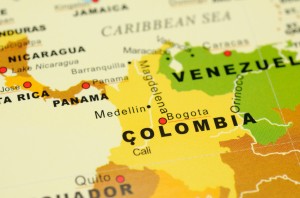Slowdown in Latin America threatens rise of the middle class
Monday, September 29th, 2014 6:56:02 by Abdul Basit Abbasi
Most Latin Americans have entered the middle class in the last decade remain vulnerable. According to the United Nations Program for Development (UNDP), although 56 million Latin Americans have moved out of poverty between 2000 and 2012, about 200 million, a third of the total population, could again be poor in case of crisis. The UN, which provided the data in August, has now joined the financial world, which provides that the growing middle class in Latin America will slow the economic slowdown, according to a study released this week Moody’s. The report explains that the social ascension resulted mainly from increased purchasing power (more credits and higher wages), without it being accompanied by a structural change.
The study of risk agency explains that the economic growth of the last 10 years was directly reflected in falling unemployment and increasing income. ” Now it’s the opposite. What is happening for several reasons, is an economic slowdown in the region, which stagnate the growth of the middle class, “says Zurita Gersan, Moody’s senior vice president and co-author of the report. The BBVA bank expects growth in the region will increase from 1.6% in 2014 to 2.5% in 2015 This improvement would be driven by the Pacific Alliance (Colombia, Peru, Mexico and Chile) plans to grow 4 % in 2015.
Among the reasons mentioned, Zurita highlights the slow recovery in the United States and Europe, but above all, the economic slowdown in China. The boom in its economy in the last decade favored exports of agricultural goods and minerals from Latin America, increasing economic dependence on Beijing. ” But now China is no longer buying as before. And with a lower global demand, prices fall. “
Nevertheless, Zurita argues that domestic policies that have affected the confidence of both consumers and investors, have had a greater influence on the low economic growth. In the case of Brazil, which plans to grow only 0.9 % this year, the study argues that the growth model based on consumption has been depleted due to high interest rates and private debt. ” There is a disturbing mix of inflation and low growth. An inflation rate of 6% per year is normal for an emerging country, but not when growth is only 1%, ” Zurita said. Still, the study maintains a positive outlook on the social achievements of the last decade.
The agency is more pessimistic Argentina due to his ” uncontrollable inflation, high interest rates and difficult situation of recession.” Furthermore, he believes that structural reforms undertaken by Mexico and Colombia have positive effects on economic growth in the long term.
Short URL: https://www.newspakistan.pk/?p=48610

















